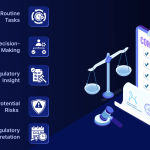Custom Resolution Utility (CRU) is a powerful tool that opens up deeper control over monitor settings, specifically resolution, refresh rate, and signal parameters. While most users rely on default settings provided by their display drivers or monitor manufacturers, CRU offers the ability to override and fine-tune these configurations for optimized performance. Whether you’re a gamer, graphic designer, or just someone who wants sharper visuals, this lightweight Windows utility can dramatically change how your monitor behaves.
Understanding How Displays Handle Resolutions
Every monitor has a set of predefined display modes called EDID (Extended Display Identification Data), which tell your graphics card what resolutions, refresh rates, and timing settings it supports. Typically, users are limited to these built-in options. That means if your monitor officially supports only 60Hz at 1080p, you won’t be able to choose 75Hz unless the display manufacturer explicitly added that option in the firmware.
CRU doesn’t hack or modify the hardware; instead, it overrides the EDID by telling Windows and your GPU to use a custom set of values. These overrides allow the system to recognize and apply configurations outside the standard scope.
Unleashing Hidden Refresh Rates
A major reason users turn to CRU is to unlock hidden refresh rates. Many monitors, especially budget models, are physically capable of higher refresh rates but are limited by factory presets. CRU gives you a way to add custom refresh rates like 75Hz, 85Hz, or even 100Hz if your display and GPU support it.
Higher refresh rates provide a smoother experience, reducing motion blur and improving response time. This is particularly noticeable in fast-paced activities like gaming or video editing. With CRU, testing these custom values becomes straightforward, letting you find the sweet spot between smoothness and stability.
Enhancing Visual Clarity with Custom Resolutions
Sometimes, displays can look soft or blurry because of poor scaling or mismatched resolutions. CRU allows the creation of exact pixel-matching resolutions tailored to your monitor’s native panel. For example, if your monitor’s native resolution is 1920×1080 but it’s running at 1366×768, text and images can look washed out.
By defining a custom resolution that matches the panel exactly, users can achieve crisper, sharper visuals. This is particularly useful when using external monitors, projectors, or TV screens that don’t automatically detect optimal settings.
Adjusting Timing Parameters for Better Stability
In addition to resolution and refresh rate, CRU provides full access to detailed timing parameters such as front porch, back porch, sync width, and pixel clock. These are rarely exposed in standard control panels, but tweaking them can have a big impact on signal stability and compatibility.
Poor timing can lead to flickering screens, blackouts, or “out of range” errors. CRU allows for fine-grained control to correct these problems—especially with older or unusual monitors. Advanced users can experiment with different timing standards like CVT, CVT-RB, or GTF to see what works best for their setup.
Customizing Resolution Profiles Per Monitor
One of CRU’s biggest strengths is its monitor-specific configuration. If you have a multi-monitor setup, CRU lets you create and apply different custom settings for each screen. That means you can optimize your main gaming monitor for high refresh rates while tailoring your secondary display for maximum color accuracy or resolution.
This flexibility is ideal for professionals who use ultra-wide monitors, vertical setups, or mixed-resolution displays. Rather than relying on generic driver profiles, CRU ensures each display gets the optimal configuration for its capabilities.
Removing Useless or Buggy Resolutions
In many cases, users encounter strange or useless resolution options that clutter the settings panel. These may come from outdated drivers or misconfigured EDID tables. CRU gives you the power to remove or hide unwanted resolutions, keeping your system clean and stable.
This decluttering helps avoid accidental switches to unsupported modes and ensures your operating system only displays resolutions that actually work well with your hardware. Especially useful for presentations, gaming setups, or kiosk environments where stability is critical.
Fixing EDID-Related Bugs and Driver Issues
Some monitors—especially older models or off-brand variants—can report incorrect EDID data, causing compatibility problems with GPUs or operating systems. CRU can be used to override or repair faulty EDID entries, helping the system correctly recognize and configure the display.
This functionality is especially valuable in situations where resolution options suddenly disappear after a Windows update or GPU driver change. With CRU, users can restore lost configurations or recover missing refresh rates without reinstalling the entire system.
Improving Experience for Emulators and Legacy Software
Certain legacy applications, including older games and emulators, work best at non-standard or low resolutions. However, modern systems often fail to support these modes natively. CRU makes it easy to add custom low-resolution modes like 640×480 or 800×600 with specific timing that matches vintage hardware.
For retro gamers and software preservationists, this feature provides accurate scaling and aspect ratios, ensuring that older applications look and feel authentic, even on modern displays.
Safe Testing Without Permanent Changes
CRU doesn’t modify system files or registry keys directly. Instead, it creates EDID overrides that the operating system loads temporarily until a change is applied. If a custom resolution doesn’t work or causes display errors, users can simply reboot into safe mode and remove the faulty configuration.
This makes CRU a low-risk tool when used correctly. The utility even includes an optional restart tool to reload the display driver without rebooting the system entirely. This quick recovery process ensures minimal downtime, especially when experimenting with different resolutions.
Supporting Both AMD and NVIDIA GPUs
CRU supports both AMD and NVIDIA graphics cards, though the process may differ slightly between vendors. AMD users enjoy seamless integration thanks to native support for EDID overrides. NVIDIA users may need to disable driver-enforced limits or use specific tools like NVIDIA Control Panel to activate changes made through CRU.
While not officially supported by GPU manufacturers, CRU is widely accepted and trusted among advanced users. The community has contributed a wealth of documentation, making it easy to learn how to apply the changes for different hardware configurations.
Downloading and Installing CRU
CRU is a free Windows utility developed by ToastyX, a well-known figure in the display optimization community. It can be downloaded from trusted sites like MonitorTests.com or GitHub. The installation is straightforward:
- Download CRU.zip from the official source.
- Extract the contents to a folder on your desktop or system drive.
- Run CRU.exe as an administrator.
- Choose your monitor from the dropdown list.
- Add or modify resolution and refresh rate entries.
- Use the restart tool (restart.exe) to apply changes.
Make sure to back up your display settings before making major changes, especially if you’re unfamiliar with timing parameters.
Limitations and Precautions
While CRU is powerful, it does have limitations. It cannot override firmware-locked restrictions or force resolutions that the monitor absolutely cannot support. Users must always consider hardware constraints—forcing a display to run at unsupported values can lead to black screens, damage, or driver instability.
In addition, CRU doesn’t work on laptops with switchable graphics systems, such as Intel + NVIDIA combinations, where the display is routed through the integrated GPU. Compatibility is generally best with desktops or external monitors connected via DisplayPort or HDMI.
Use Cases Across Professions
Gamers, video editors, photographers, and even office professionals find CRU useful. For gamers, higher refresh rates and custom resolutions mean smoother, faster performance. For content creators, precise resolution control helps achieve pixel-perfect output, reducing scaling artifacts.
Even in business environments, CRU proves useful when setting up digital signage, presentations, or multi-screen dashboards. Users gain control over screen behavior without needing expensive third-party software or complex driver modifications.
Boosting Productivity with Better Screen Real Estate
Increased resolution doesn’t just improve visuals—it enhances productivity. By enabling ultra-wide modes or high-density resolutions, users can display more windows, code, or documents on a single screen. CRU enables configurations like 2560×1080 or 3440×1440 even if the GPU doesn’t list them natively.
Whether managing financial spreadsheets, writing content, or editing media, having more usable screen space can significantly reduce time spent switching tabs or resizing windows.
Conclusion
Custom Resolution Utility is more than a tweak tool—it’s a gateway to full control over your display hardware. By unlocking hidden refresh rates, enabling precision resolutions, and repairing faulty configurations, CRU empowers users to optimize their visual environment with minimal risk and maximum impact.
For those looking to push their monitor to the next level, CRU offers a professional-grade toolkit that’s both free and incredibly versatile. With a bit of learning and experimentation, it becomes possible to achieve a display setup tailored exactly to your preferences, delivering better clarity, smoother motion, and a more personalized user experience.










